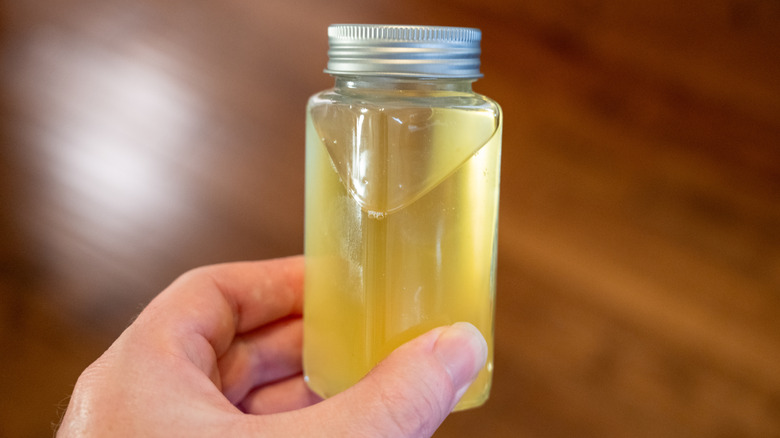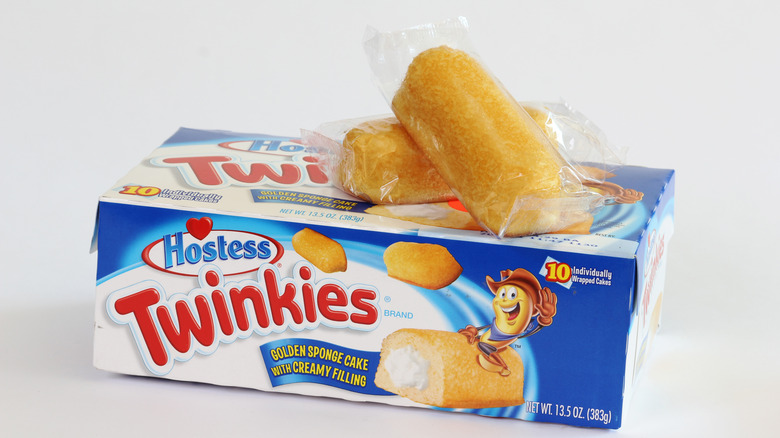The Iconic Hostess Snack That Uses Beef Fat As An Ingredient
Cooking with animal fats is something of a hot topic in the culinary world right now, thanks in large part to the backlash against seed oils (the effects of which may or may not be overblown by vocal opponents like RFK Jr.). In fact, using animal fats like lard and tallow was the norm throughout human history until a shift towards hydrogenated seed oils like Crisco and soybean oil in the 20th century. McDonald's famous fries (which have fewer ingredients than you might think) were even fried in beef tallow up until the 1990s.
Of all the places that you might expect to find tallow – which, to be clear, is just rendered beef fat – Hostess's beloved Twinkies snack cakes would probably be the last one. And yet, tallow is there, buried in the middle of the long list of ingredients on the Hostess website. Considering that list also includes artificial coloring — although not red dye no. 3, which was recently banned by the FDA — and plenty of mystery chemicals, we're guessing that a bit of beef fat isn't the going to be the most objectionable ingredient for many people. Unless, of course, you're a vegetarian or vegan, and just discovered that Twinkies contain animal products. While it may seem strange on paper that Twinkies contain beef fat, it's actually not that weird when you delve into the science of using tallow. Turns out that tallow has properties that imbue something special into your goodies, to the point that you might even consider using it at home.
Baking with tallow makes more sense than you might think
Of all the mistakes you are making when baking a cake, using the wrong fat could be one you hadn't banked on. Baked goods made with tallow instead of vegetable oil or even butter tend to be richer and more luxuriant. You don't taste the beef in tallow-cooked goods, per se, but you do get a savory essence that adds an unmistakable complexity to your cookies or pie crusts. Tallow also has a higher melting point than butter, which means that it gives an exquisite texture to flaky baked goods. It's also more solid at room temperature, which is ideal when you have to incorporate it into flour — it will shred easily, much like softening butter with a grater.
Proponents of animal fats also point out that tallow is free of trans fats and contains multiple dietary vitamins. Nobody is arguing that beef fat is the nutritional equivalent of leafy greens, but it may be considered more healthy than seed oils. You can make fresh tallow at home by obtaining beef fat from your butcher and simmering it on low heat for a couple of hours, then straining the solids out. Stored in an airtight container, this golden, creamy tallow is then good in your fridge for a few weeks. Who knows ... you might even seek out one of the many recipes for homemade snack cakes on the internet and try your hand at your own Twinkies!

